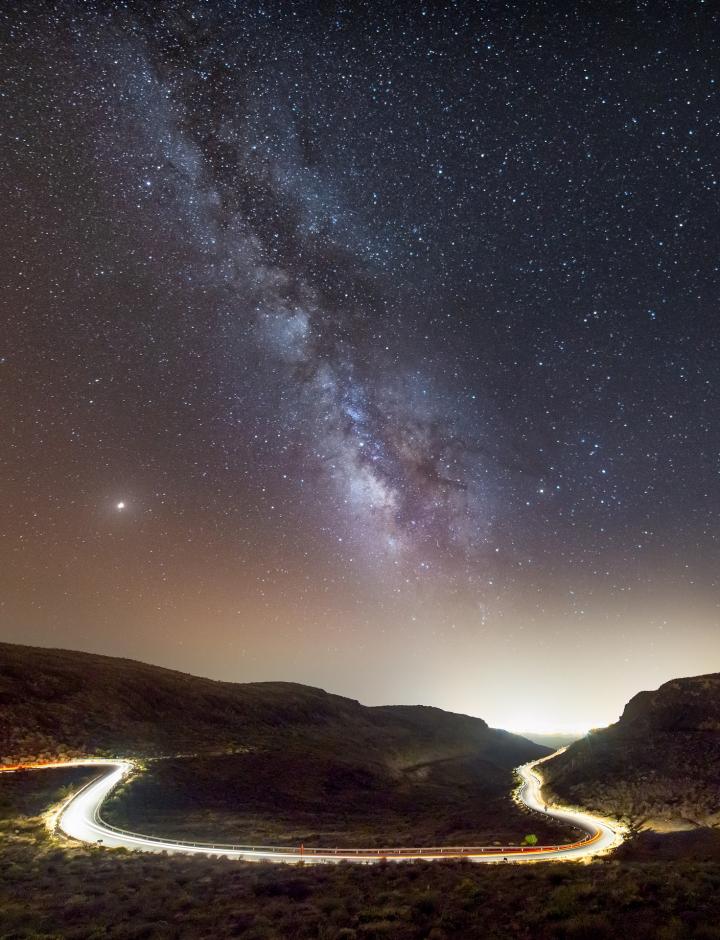As autumn begins, we have a few more weeks to look at the most amazing part of the night sky. Let us easily locate the most photogenic telescopic targets, the planets Jupiter and Saturn.
On the next clear evening, look around the sky as soon as darkness falls.
Jupiter
These nights that’s as early as 7 P.M. and certainly by 7:30. Just look rather low in the south—for the night’s brightest star. But it’s not really a star, it’s the untwinkling planet Jupiter.
If you have a small telescope this is a good place to point it, just as Galileo did in 1610 when he saw little dots circling it and realized that our planet was not the center of all motion.
Heads up! On October 3, see Jupiter right next to the waxing crescent Moon! Just look at nightfall. Right at the tip of the crescent is the king planet. What a pair!
Saturn
But never mind that. This isn’t a history lesson. Instead, look left of Jupiter until you get to the first bright (but not dazzling) star—and this is Saturn.
And wow, if you really do have a small telescope, its rings will blow you away even if you’ve seen them a thousand times before.
Read more about Saturn, the Real Lord of the Rings.
The Milky Way
Here’s where we get really far out. Look halfway between Jupiter and Saturn. There’s nothing there, right?
From most places, this is a vacant patch of celestial real estate.
But if you’re one of the really lucky ones who live far from any light pollution, like in rural Montana, you’ll notice that the Milky Way is extra bright in this spot.
In the country with dark skies, you should see a hazy band of stars stretched across the sky. Every visible star is within the Milky Way.
And that extra-bright spot is the galaxy’s center, where most of the stars reside.

Center of Everything
This bright spot is also the place around which everything revolves. It’s the center of everthing.
Every single star you can see in the heavens orbits around this spot once every quarter of a billion years. This includes our own Sun, taking our planet Earth along for the ride.
Let’s let this sink in: we circle this spot in the sky over and over again and have been doing it since our world was born.
To sum it up
To sum up the whole thing, these first few weeks of autumn let us easily locate the most photogenic telescopic targets, the planets Jupiter and Saturn.
And just as easily locate the core of our Milky Way galaxy.
Worth stepping out of the house at nightfall, at least just once, don’t you think?
Comments